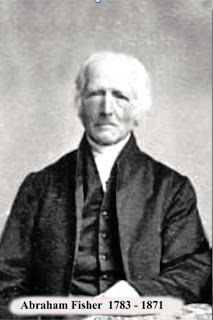Airgead Póca (2)
Story by' Padraig 'Paud' O Cuirrin, photos (c) Eddie Cantwell .
My thanks to Paud, for this follow up
As previously mentioned there was a
significant gap in time between the sugar-beet thinning season and the
harvesting of the crop, so other ways had to be found to earn some pocket-money
to cover the school holiday period when it was most needed. Central to these
fund-raising efforts would be the saving of the hay and the harvesting of
cereal crops.
In Tipperary long ago they used to say “The
hay is saved – and Cork is bet!” which aptly described the importance of hay in
the farming cycle. There was - and still is - a huge dependency on the hay crop
among farmers, small and large, to see the farm livestock through a long and
often harsh winter.
When it came to hay–making the first
obligation was to the home place and afterwards one might fit in some paid work
with a neighbour such as Garrett Quinn, who had an extensive farm close by
Before the widespread use of the baler, the process of saving the hay went
through a number of labour-intensive stages – all meant to ensure that the hay
ended up fully dry in a rick in the haggard or in a barn. The changeable nature
of the Irish summer meant that the description of the hay being “saved” was
indeed very appropriate!
Whether working at home or on hire to
another farmer there was something pleasant about hay-making. It did not
involve the hardship associated with the beet crop and the work was, out of
necessity, carried on in fine summer weather. Also saving the hay had an
element of the meitheal about it, as people often helped each other –
and never did a cup of tea and a slice of currant cake taste better than when
enjoyed lying against a cock of hay!
Most small farmers would have an acre of
oats or barley – whether for animal feeding or selling on to a local grain
merchant – and again some opportunities for earning pocket-money opened up in
late summer, when the harvesting took place. By the time I was old enough to do
serious farm work the combine harvester had largely taken over from the reaper
and binder and the threshing machine, and the job had become more about lifting
bags of grain and gathering up straw. That one piece of modern machinery
fundamentally changed the face of rural Ireland as the concept of the meitheal
or people working together for a common purpose, such as at a threshing,
largely came to an end.
A source of some scarce spare cash for some
of us in An Rinn was winkle picking. Periwinkles were to be found in abundance
to the east and west of Cē Bhaile na nGall and in a few other places such as
Poll a' Phūca. The demand for winkles seemed to have come from the Continent as
it is only very rarely that I saw them being eaten locally. Winkle picking was
not easy work as it involved being stooped over for as long as the tide allowed
you to be on the rocks, and weather conditions were often harsh. The problem
for us “suppliers” is that there were very few buyers and more often than not
you were faced with a monopoly situation. The going rate was around a
half-crown a bucket but sometimes the bucket produced by the buyer was well in
excess of the standard measure – and the winkles would be piled so high that
they were falling off the sides! Even if you protested and held back from
selling you ran the risk of the winkles dying off before another buyer
appeared. On the whole, picking winkles was neither attractive nor very
profitable and it was something that we did when there was little else
available.
The most lucrative part-time job I had was
for a summer in the early 1960s. The Land Commission decided to bring some
order to bear on the many bits and pieces of land, broadly around Baile na
nGall ; where the boundaries of such
small holdings were largely undefined and where ownership was sometimes
disputed. The job entailed a lot of fencing and I was employed as part of a
work-gang of about six men tasked with erecting concrete fence-posts and wire.
As material had to be moved around the various sites our farm horse and cart
was needed and there was extra payment given for this service. Mickey Dalton,
who is still to the good as a well-known traditional musician, was the site
foreman and the late Eddie Curran (Glenbeg) was responsible for paying us on behalf
of the Land Commission. An engineer from Dungarvan occasionally inspected the
work. Some of the fencing that was erected is still in place fifty years later
and was probably helpful to people over the years, especially during our recent
building frenzy when sites in An Rinn were hugely valued? In any event, I was
well paid by the standards of the time (when the premium for the horse and cart
was tallied) – even if most of what I got had to be surrendered at home!
In due course, we moved on to more serious
and permanent ways of earning a living. Much is made nowadays of “work
experience” or the lack of it. I like to think that all of these little jobs
that we did in our youth amounted to relevant “work experience” - if perhaps
not for inclusion on any formal CV but, in a more general sense, as preparation
for life.









